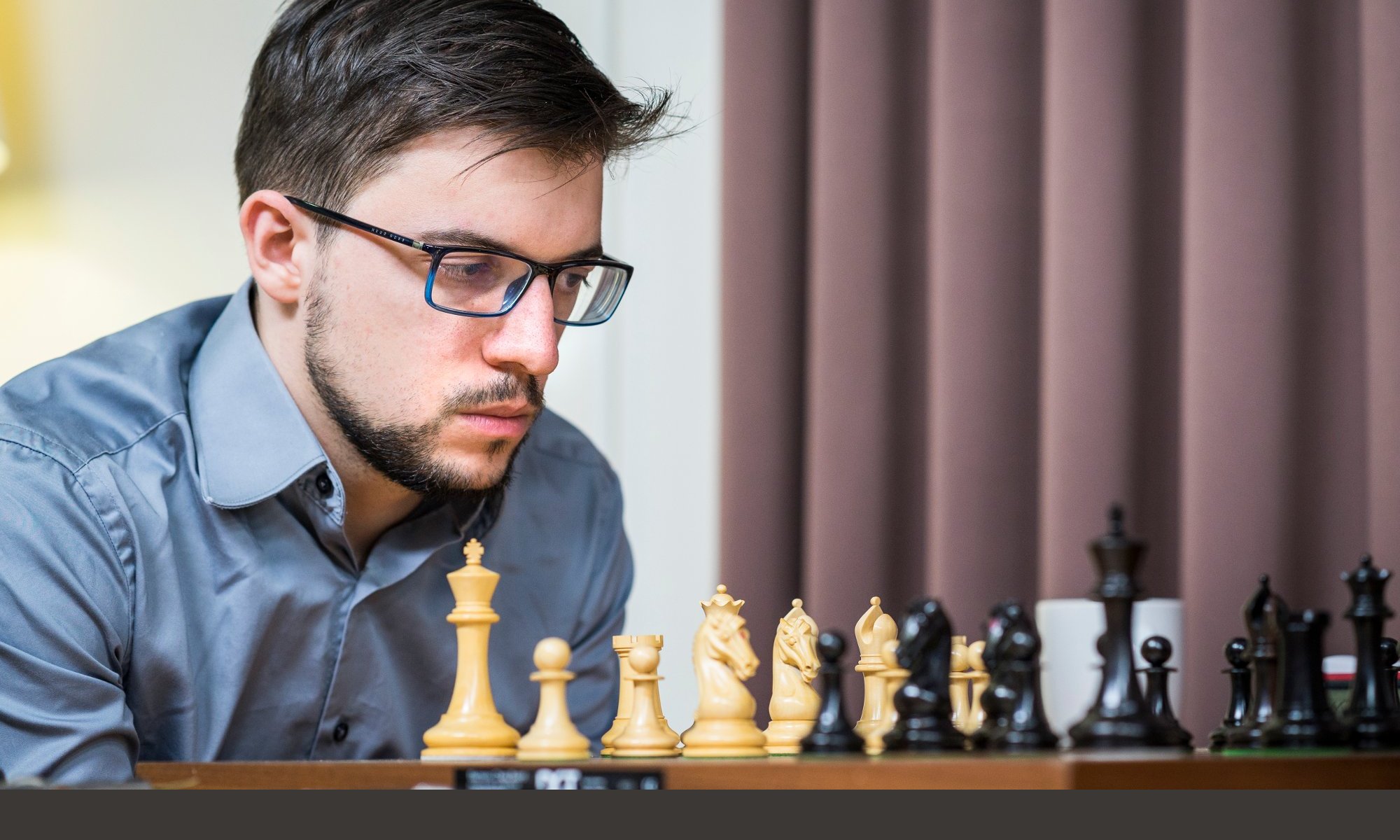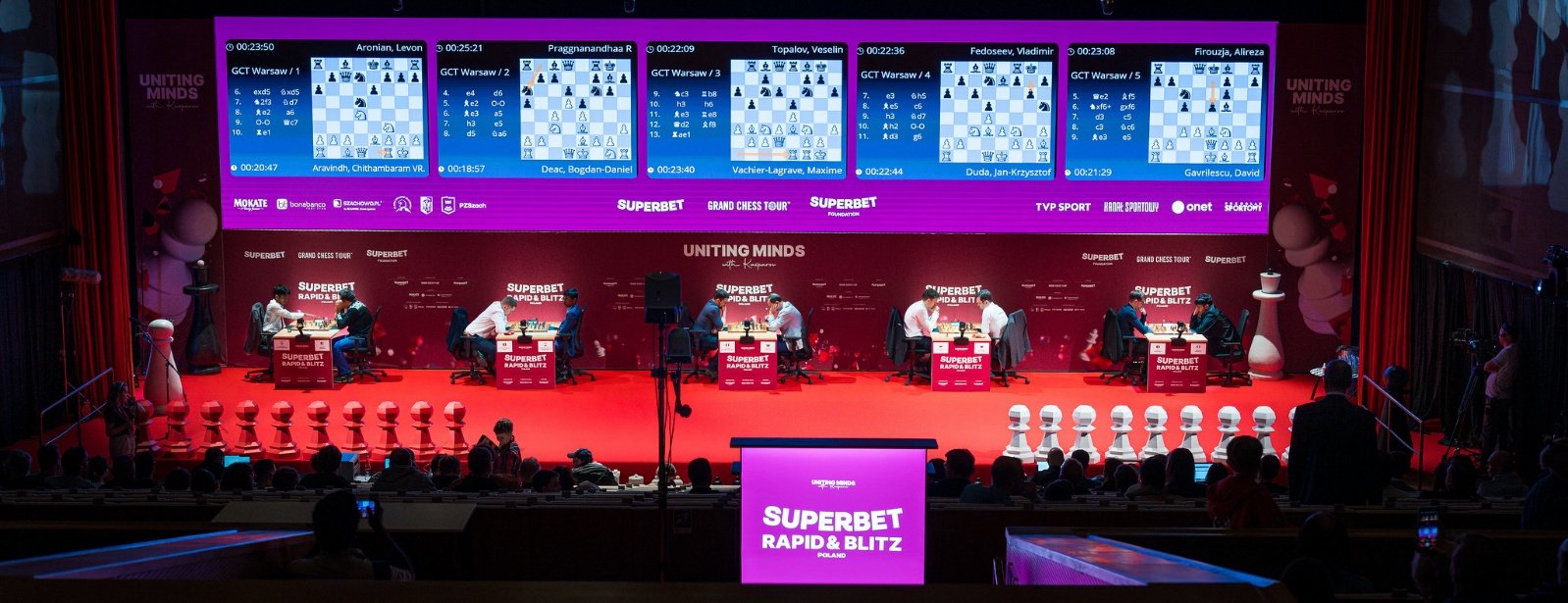Warsaw was the venue for this year’s Grand Chess Tour (GCT) debut. We were in the old town, which was nice and made for pleasant strolls. Otherwise, the rest was pretty much the same as always, with the same hotel, the same venue and the same competition format. I always like to launch the GCT, since it’s a circuit that’s been working well for me for the last 10 years, even if I still haven’t won it 😊 (4th and 6th at the start, then five times 2nd and twice 3rd! Ed.)
As far as the competition was concerned, things got off to a very, very bad start on the first day, with a loss in a winning position against Prag, followed by a draw in a position that I found rather tricky against Aronian. And finally another defeat, this time against Topalov. I gradually got back into the swing of things, getting to 50% by the end of the Rapid. It wasn’t necessarily brillant, but considering the nightmare of the first day, it wasn’t too bad.
Then the blitz got off to a very bad start too, with a couple of early losses. But suddenly, something changed… The end of the first day, and most of the second day, went very well. It allowed me to move up, not into first place, because Fedoseev had already been very strong in the Rapid and even stronger in the Blitz, winning just about any position he could get his hands on! In fact, he finished the tournament with a score almost worthy of Magnus, winning three or four rounds before the end. But in any case, it enabled me to come back and finish overall second in the end. It was a good result, since Fedoseev had a wild card, which enabled me to collect as many points as possible from the Tour players present in Warsaw.

I was able to rest for a few days in Paris between Warsaw and Bucharest, the venue for the first of the two classical GCT tournaments. I quickly realized when I arrived in Romania that I wasn’t necessarily in the best of moods and that the tournament was going to be complicated. I was feeling sick, with a fever and a headache. And I was feeling very tired.
Nothing that really prevented me from playing, but it took up a lot of my energy during the tournament.
The first day was one of the hardest, especially against Firouzja where, after a few hours of play, I realized that I was unable to really think; this was particularly obvious after the 40th move; anyway, Firouzja had played a very good game and deserved to win. Then, paradoxically, for the next few days I wanted to rest and regain my strength, so quick draws would have done the trick. But things turned out differently, and I ended up having some long games, which still turned out well 😊. In fact, against Wesley So, I got an extra pawn in the endgame, which was certainly a draw though, but I gradually managed to put on a lot of pressure. I even let the win slip away at one point, but eventually recovered it. Another win was the surprisingly quick one against Gukesh, the reigning world champion.
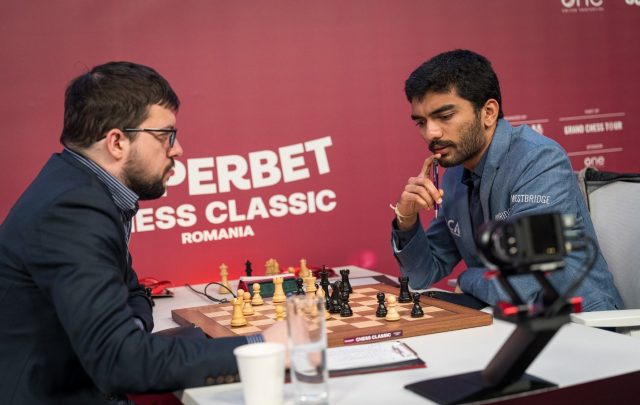
A draw with black against Prag after a very good game took me to the rest day with +1, but having spent a lot of energy, and still feeling sick. And here, I was lucky. Indeed, one of my worst days in physical terms was this rest day, when I was unable to do anything. So it didn’t cost me too much, apart from the fact that I came back to the board the next day, without any preparation. I didn’t take any risks and decided to draw quickly (against Abdussatorov), and gained more time to recover. I really felt better for round 8 against Caruana, after a draw with black that I’d describe as « uneventful » against Deac; even if the position wasn’t so clear, it nevertheless always remained balanced. On the other hand, against Caruana, it was very tense and could have turned out very badly for me. I didn’t necessarily realize it during the game, and neither did he! In fact, he was looking for « the » big advantage, but without really finding it. To his credit, it wasn’t easy, whatever our friend the computer might say.
And that brings us to the last round, where Prag was in the lead after winning round 8; Firouzja, Caruana and I were half a point behind. I was playing against Duda with white. He was at the bottom of the tournament rankings, so this was an opportunity to win. He decided to play a Spanish Arkhangelsk rather than a Berlin for example, or a Petrov, which he had already tried a few times against me. I was perhaps a little surprised, but it turns out that I had reviewed my files on this variation and had some ideas. This specific line had surprisingly been played for the first time in April 2025; but, I told myself, it wasn’t a big deal, as the position was still quite complicated. So my preparation went well. Duda took a long time, and he didn’t necessarily come up with the best answers. In fact, it’s this game that we’ll be analyzing in greater detail below…
In the end, I won and qualified for the tie-break. After a homeric game, Firouzja also qualified and we ended up in a three-way tie-break which was very tense, with two draws to start with.
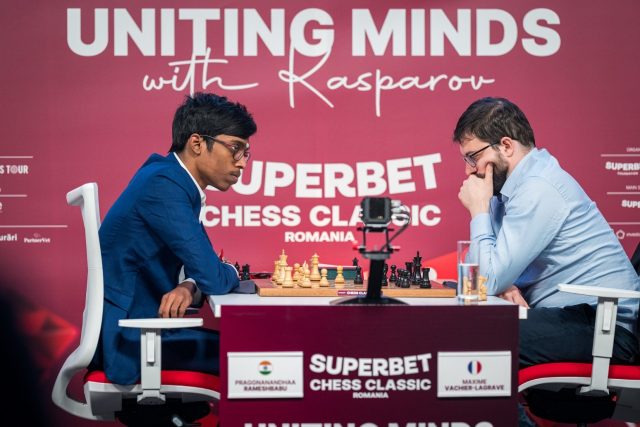
The third and final game was therefore decisive, and it was the one I played against Prag with black. Unfortunately, I ended up making a mistake in the endgame and lost. So, in the end, Prag won the Bucharest tournament quite deservedly, as he was very convincing and unbeaten throughout. He also took risks at the right time, notably against Wesley So with this Gambit Benko.
By sharing the points in Bucharest and capitalizing on my good tournament in Warsaw, I now lead the Grand Chess Tour. That’s pretty good news, and it puts me in a very good position to qualify for the Sao Paulo Finals at the end of September (the top 4 will be there. Ed.).
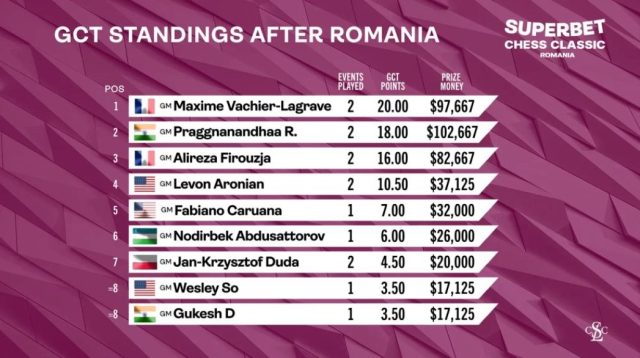
MVL – DUDA
1.e4 e5 2.Nf3 Nc6 3.Bb5 a6 4.Ba4 Nf6 5.0-0 b5 6.Bb3 Bc5 7.c3 d6 8.d4 Bb6 9.a4 Rb8 10.a5 Ba7 [10…Nxa5? 11.Rxa5 Bxa5 12.dxe5 Nxe4 (12…dxe5 13.Qxd8+ Kxd8 14.Nxe5) 13.Qd5 is known to be losing].
11.h3 Bb7 12.Re1 0-0 13.Be3 exd4 14.cxd4 Nb4 15.Nc3 Bxe4 16.Nxe4 Nxe4 17.Rc1 Rc8 18.Bc2 d5 19.Bb1 Qd6 20.g3
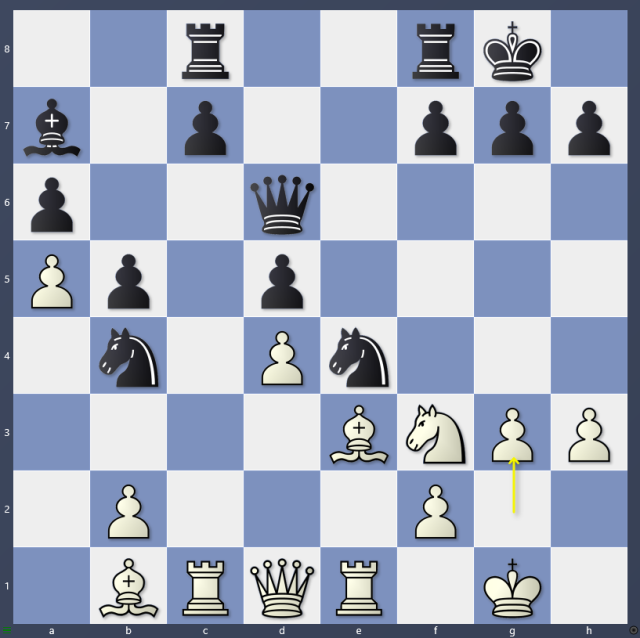
20…Nc6 [There is no perpetual after 20…Nxg3? 21.fxg3 Qxg3+ 22.Kh1 Qxh3+ 23.Nh2]
21.Bf4 Qf6 [21…Qd7 22.Kg2 f6 23.h4 Nxa5 24.h5 was the continuation I remembered].
22.Bxe4 [First thought, but an easy one as there’s really no choice].
22…dxe4 23.Rxe4 Qf5 [With the idea …Qd5. After 23…Nxa5 I wanted to play 24.Be5 Qe6 (24…Qf5 25.Rf4 and if 25…Qxh3? 26.Ng5 Qh6 27.Rh4 Qxg5 28.Rg4 Qh6 29.Qd2! wins) 25.Ng5 Qg6 (25…Qf5 26.Rf4) 26.Bxg7! Qxg7 27.Rg4 f5 (27…Kh8 28.Nxh7!) 28.Ne6 fxg4 29.Nxg7 Kxg7 30.Qxg4+ and even if the machine gives equality, it’s not at all the impression I had. In practice, black can be prepared to suffer].
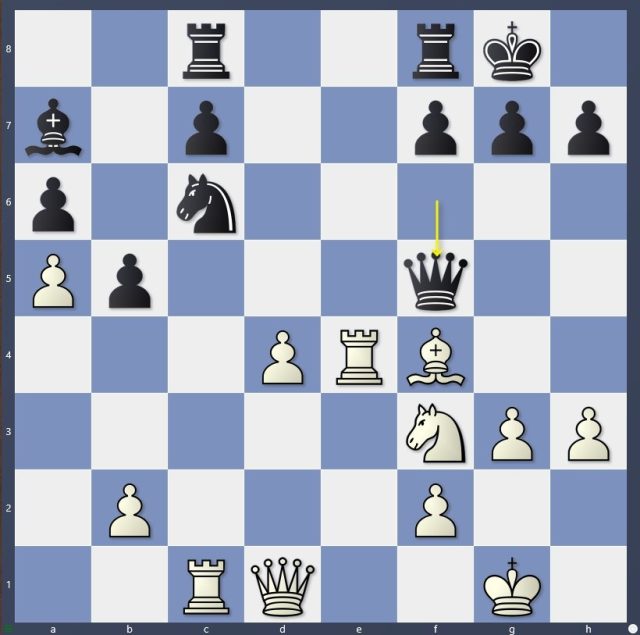
24.Ne5! [As soon as I saw it, I understood that this exchange sacrifice was powerful].
24…Nxe5 [24…Qxe4? 25.Nxc6 followed by 26.d5, and the Ba7 is a zombie; 24…Bxd4 25.Nxc6 Bxf2+ 26.Kxf2 Qxe4 27.Qf3 should not allow black to survive either; 24…Nxa5? 25.Qe1! Nb3 26.g4 is just as nightmarish].
25.Rxe5 Qxh3 26.Re7? [Unfortunately, I missed all the defenses based on …Rce8, hence this inferior move. The simple 26.d5! completely locked up black’s position, with an already decisive strategic advantage].
26…h6 27.d5 [A move too late!]
27…g5! 28.Be5 [My original idea was 28.Be3 Bxe3 29.Rxe3 but after 29…Qf5 I obviously have compensation for the pawn, but probably no more].
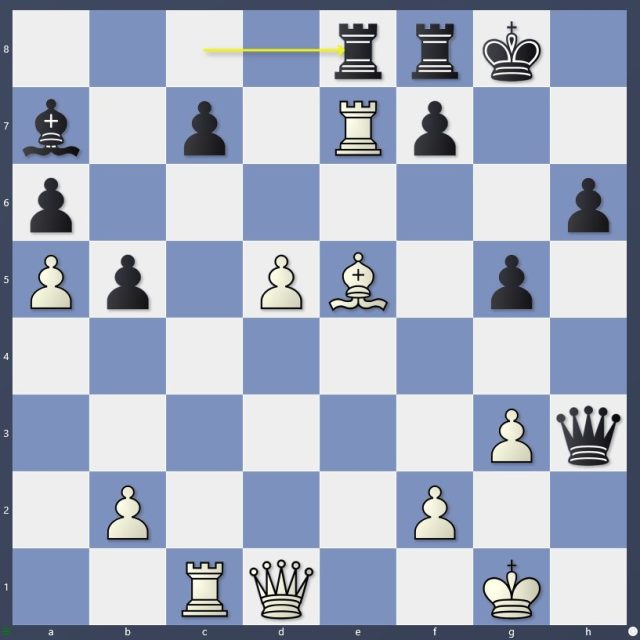
28…Rce8! 29.d6 [The only way to continue since 29.Rcxc7 Bb8! is a key resource, whereas 29.Rxe8 Rxe8 30.Bxc7 Bxf2+ 31.Kxf2 Qh2+ 32.Kf1 (32.Kf3? f5! would be suicidal) 32…Qh1+ 33.Kf2 Qh2+ would lead to perpetual].
29…cxd6 30.Rxa7 [30.Qxd6 always fails to 30…Bb8]
30…dxe5 31.Rxa6 e4 32.Qf1 Qg4 [32…Qxf1+ 33.Kxf1 could lead to a tricky Rook endgame for black, because of the a5 pawn. But 32…Qh5 was the most natural here, and on the board I saw no alternative but to accept my fate with 33.Qd1 Qh3 34.Qf1 and draw. I think that here, Duda wanted to keep the option of playing for the win].
33.Rxh6 [At first, I wanted to force a draw with 33.Qd1, until I saw that pushing the e-pawn was risky for him].
33…e3?! [33…Kg7 34.Qh3 Qxh3 35.Rxh3 kept the balance]
34.Qd3! [For sure, missed by Duda].
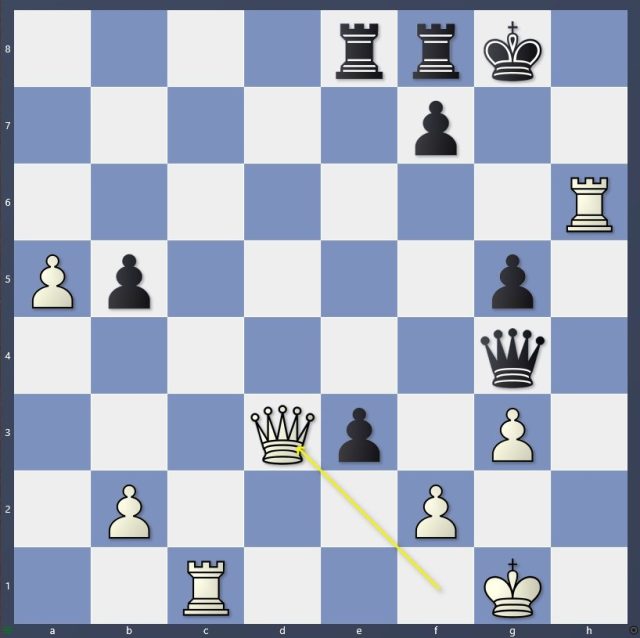
34…Re4? [This time, the mistake is decisive. With little time on the clock, Duda failed to appreciate the dangers on the h-file, and the astonishing security of my King. It was compulsory to exchange Queens with 34…Qe4, with an objectively equal double Rook ending, but undoubtedly easier to play for white].
35.Kg2! [A very aesthetic multi-purpose move. It threatens 36.f3 while protecting g3, prevents taking f2 with check, and connects the Rooks!]
35…exf2 36.Rch1 f1Q+ [There is already no defence: 36…Qe2 37.Qxe2 Rxe2 38.Rh8+ Kg7 39.R1h7+ Kg6 40.Rxf8 Kxh7 41.Rxf7+ Kg6 42.Rxf2 Re4 43.b3 wins; 36…Qf5 37.Rh8+ Kg7 38.R1h7+ Kg6 39.Qd6+ Re6 40.Rh6+ Kg7 41.Qxf8#; 36…Rfe8 37.Rh8+ Kg7 38.R1h7+ Kf6 39.Rh6+ Kg7 40.Rxe8 Rxe8 41.Qh7+ Kf8 42.Qh8+ Ke7 43.Qf6+ Kd7 44.Qc6+ followed by mate]
37.Kxf1 Qf5+ 38.Kg2 Qe5 39.Rh8+ Kg7 40.Rxf8! [The last trap was 40.R1h7+?! Kf6 41.Rxf8? (41.Rh6+ Kg7 42.Rxf8 Kxh6 43.Rxf7 was still winning, but more laboriously) 41…Qxb2+ and the icing on the cake was 42.Kf3?? (42.Kf1 Qc1+ 43.Kg2 with perpetual) 42…g4+! 43.Kxe4 Qe5#]
40…Qxb2+ [40…Kxf8 41.Qd8+ Kg7 42.Qh8+ Kg6 43.Qh6+ Kf5 44.Rf1+; 40…Re2+ allowed white’s King to make a nice round trip win: 41.Kf3 g4+ 42.Kxg4 Re4+ 43.Kf3 Qf5+ 44.Kg2]
41.Kf3 Rd4
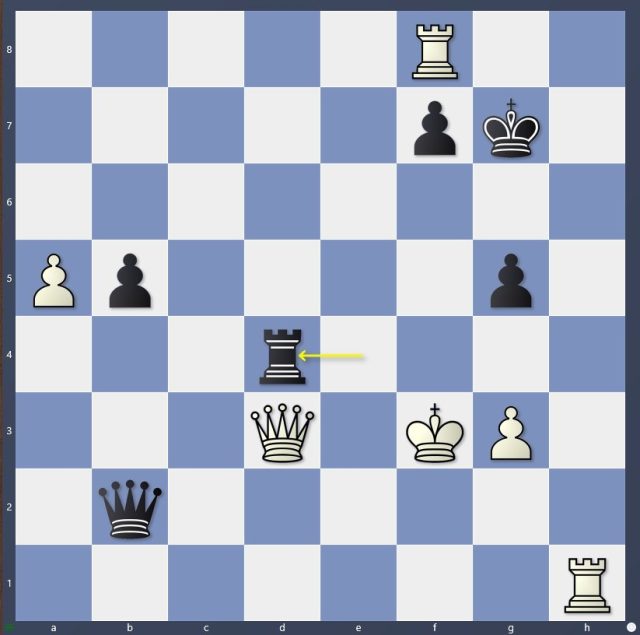
42.Rxf7+! [The most expeditious]
42…Kxf7 43.Qf5+ Ke7 44.Qe5+ [The Rh1 will come into play and it’ll be mate].
1-0
Maxime’s games in Warsaw :
Maxime’s games in Bucharest :
A few months ago, Maxime played the truth game, which Chess.com has organized several times, as part of its « Lie Detector Chess » series. Two players are there, questioning each other under the supervision of an operator who determines whether the answer given to each question is true or false. This is an opportunity to see Maxime and his colleague and friend Levon Aronian compete in a series of tricky or amusing questions, most often related to the world of chess, of course, but sometimes also more personal.
A fascinating « moment of truth »!
